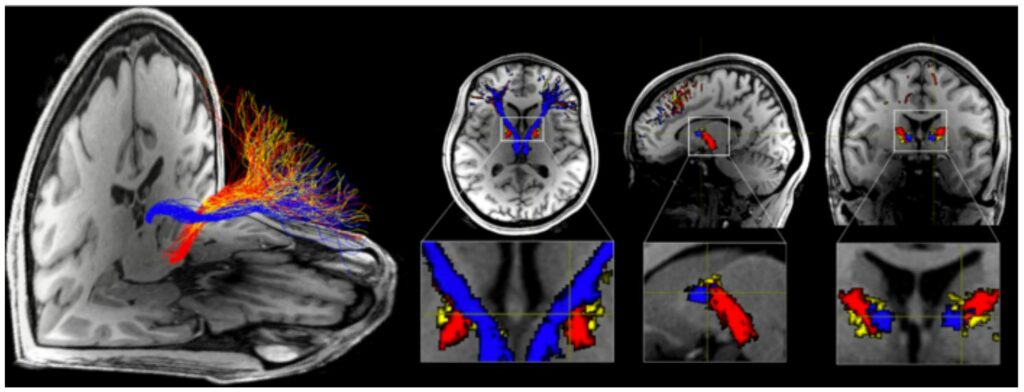New research published today says that White matter in the brain, previously implicated in animal research, may be disrupted in cocaine or heroin addicts’ brains.
Scientists from the Icahn School of Medicine at Mount Sinai and Baylor College of Medicine carried out a study on people who were addicted to cocaine or heroin.
They found that white matter in the brain, which had been linked to addiction in animal studies, was specifically damaged in the brains of these people. The findings of the study were presented today.
The study looked at how the prefrontal cortex (PFC), a part of the brain that is important for controlling higher-order executive functions, and the habenula, a part of the brain that is important for reward and reward-related learning, are linked.
In animal models of addiction, the habenula has been found to play a crucial role in driving drug-seeking behaviors.
In particular, signaling from the prefrontal cortex to the habenula is broken in rodent models of cocaine addiction. This suggests that this PFC-habenula circuit is involved in withdrawal and cue-induced relapse behaviors.
But until now, the PFC-habenula path in the human brain was not well understood.
Additionally, its role in the neuropathological effects of substances other than cocaine has not yet been investigated.

Using diffusion magnetic resonance imaging (MRI) tractography, researchers led by Rita Z. Goldstein, PhD, and Junqian Xu, PhD, looked at the PFC-habenula circuit in patients with cocaine or heroin addiction vs healthy control participants for the first time in the human brain.
Diffusion MRI tractography models the fiber bundles in the living human brain using noninvasive brain imaging.
“In addition to identifying microstructural differences, specifically reduced coherence in the orientation of the white matter fibers in the cocaine-addicted group that comprised both current cocaine users and those with short-term abstinence, we extended results beyond cocaine (a stimulant) to heroin (an opioid), suggesting that abnormalities in this path may be generalized in addiction,” says first author Sarah King.
Among all addicts, they found that impairment increased with earlier age of initial drug use, suggesting a possible involvement for this circuit in developmental or premorbid risk factors.
The findings contribute to the field’s ongoing research by focusing on a previously unstudied circuit in the pathophysiology of human addiction, where deficits may make a person more susceptible to developing a drug addiction and relapsing from it, and which may be potentially amenable to individually tailored prevention or treatment efforts.
Source: Mount Sinai Health System
Image Credit: Getty
You were reading: Scientists Found Something Strange In The Brains Of Drug Addicts